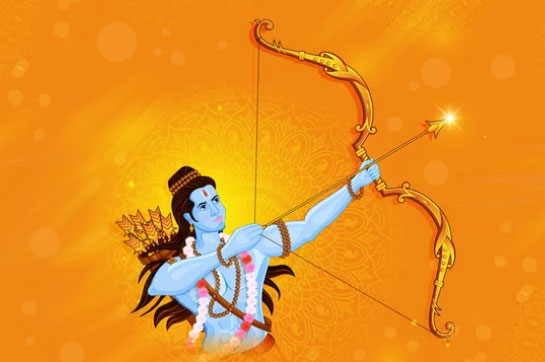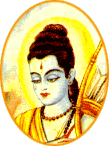Annually observed in the Hindu month of Chaitra, Ram Navami is one of the holiest Hindu festivals that is observed in nearly every part of the world inhabited by even the least number of Hindus. Explore the interesting origin of Ram Navami with TheHolidaySpot and know how this occassion got its roots. If you like reading about the History of Ram Navami, click here and pass this article on to your friends. Have a happy Ram Navami celebration!
Every year, the month of March-April witnesses a flurry of activities in the pilgrimages and religious spots around India teeming with millions of Hindus with faith in their hearts and devotion in their minds. It is not something unnatural for the knower who is fully aware that the Hindu month of Chaitra is near and Ram Navami, one of the greatest holy Hindu occassions, is to be celebrated in 'Shukla paksha' or the waxing moon phase on the ninth day of the same.
The faithful Hindus believe that on a similar day in the year 5114 BC, the prayers of Dasharatha, the monarch of Ayodha (an ancient city in the state of Uttar Pradesh in India) was answered. This king had three wives named Kausalya, Sumitra and Kaikeyi. But none of the three bore him a male child which the king needed to preserve his dynasty and as an heir to his throne. Even after several years of his marriage, the King was unable to be a father. Then the great sage Vasistha adviced him to perform Puthra Kamesti Yagna, the sacred ritual carried out to obtain an offspring. With King Dasharatha's assent, the great sage Maharshi Rushya Shrunga performed the ritual in the most elaborate manner possible. The king was handed a bowl of payasam (a preparation of milk and rice) and asked to distribute the food among his wives. The king gave one half of the payasam to his elder wife Kausalya, and another half to his younger wife Kaikeyi. Both wives give half of their portions to Sumithra. This unequal distribution of the sacred food leads to both Kausalya and Kaikeyi giving birth to one son each while twin sons are born to Sumithra.

The day was one of extreme celebrations in Ayodha where not only the royal family but every resident of the place heaved a sigh of relief and thanked the almighty for this miracle, little knowing that god himself was present among them in the form of Rama, the newborn son of Kausalya. The great Hindu epic Ramayana (written by the ancient sage and Sanskrit poet Valmiki) as also a host of other ancient epics mention Rama as the seventh incarnation of the supreme god Lord Vishnu, who was born on earth to restore mankind to its previous glory, annihilate the evil and protect the innocent.
In his adulthood, Rama's execution of Ravana, the terrible demon-king of Lanka, and his army as well as many other spectacular deeds proved his divine status before the people. When Rama became a king, the people of Ayodha supposedly began to observe his birthday out of extreme devotion to their godly ruler. It is highly difficult to point out the exact time when Ram Navami celebrations were initiated. According to noted historians, Ram Navami observances can be traced back to the pre-christian era and his birth is believed to have taken place sometime near 5114 BC. It can hence, safely be said that the first Ram Navami was held was on or around this time. References to this festival can also be found in the sacred book "Kalika Puran". The festival is given such importance in India that even in the days when caste system was prevalent in the country, the shudras (people belonging to the lowest caste) were allowed to celebrate the occassion. It is believed that observing a fast on this day purifies the mind and soul greatly and leads to the attainment of salvation.

Looking for Something? Search Google :